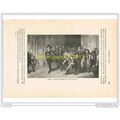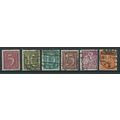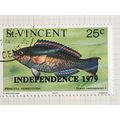Rio de Janeiro, Brazil - Carnival (Sambas School Line) - postcard c.1980s
- Condition : Used
- Dispatch : 2 Days
- Brand : None
- ID# : 190241684
- Quantity : 1 item
- Views : 177
- Location : United Kingdom

- Seller : justthebook (+1704)
- Barcode : None
- Start : Sat 21 Mar 2020 13:05:51 (BST)
- Close : Run Until Sold
- Remain : Run Until Sold
More Listings from This Seller view all
Seller's Description
- Postcard
- Picture / Image: Brasil - Rio de Janeiro - Carnival (Samba's School Line) / Carnaval (Ala de Escola de Samba)
- Publisher: Edicard
- Postally used: no
- Stamp: n/a
- Postmark(s): n/a
- Sent to: n/a
- Notes / condition:
Please ask if you need any other information and I will do the best I can to answer.
Image may be low res for illustrative purposes - if you need a higher definition image then please contact me and I may be able to send one. No cards have been trimmed (unless stated).
------------------------------------------------
Postage & Packing:
Postage and packing charge should be showing for your location (contact if not sure).
No additional charges for more than one postcard. You can buy as many postcards from me as you like and you will just pay the fee above once. Please wait for combined invoice. (If buying postcards with other things such as books, please contact or wait for invoice before paying).
Payment Methods:
UK - PayPal, Cheque (from UK bank) or postal order
Outside UK: PayPal ONLY (unless otherwise stated) please. NO non-UK currency checks or money orders (sorry).
NOTE: All postcards are sent in brand new stiffened envelopes which I have bought for the task. These are specially made to protect postcards and you may be able to re-use them. In addition there are other costs to sending so the above charge is not just for the stamp!
I will give a full refund if you are not fully satisfied with the postcard.
----------------------------------------------
Text from the free encyclopedia WIKIPEDIA may appear below to give a little background information (internal links may not work) :
*************
The Carnival in Rio de Janeiro (Portuguese: Carnaval do Rio de Janeiro) is a festival held every year before Lent and considered the biggest carnival in the world with two million people per day on the streets. The first Carnival festival in Rio occurred in 1723.[1][2]
The typical Rio carnival parade is filled with revelers, floats and adornments from numerous samba schools which are located in Rio (more than 200 approximately, divided into five leagues/divisions). A samba school is composed of a collaboration of local neighbours that want to attend the carnival together, with some kind of regional, geographical and common background.
There is a special order that every school has to follow with their parade entries. Each school begins with the "comissão de frente" ("Front Commission" in English), that is the group of people from the school that appear first. Made of ten to fifteen people, the "comissão de frente" introduces the school and sets the mood and style of their presentation. These people have choreographed dances in fancy costumes that usually tell a short story. Following the "comissão de frente" is the first float of the samba school, called "abre-alas" ("Opening Wing" in English). These are followed by the Mestre-sala and Porta-Bandeira ("Master of Ceremonies and Flag Bearer" in English), with one to four pairs, one active and three reserve, to lead the dancers, which include the old guard veterans and the "ala das baianas", with the bateria at the rear and sometimes a brass section and guitars.
The Samba school parades were held in the Praça Onze was known the birthplace of samba carioca called Pequena Africa. Future Estácio de Sá, together with Portela and Estação Primeira de Mangueira paraded for the first time in the city in 1929. In 1930, five schools were already parading. With the works of in Avenida Presidente Vargas the parade moved there, from 1942 to 1945 the parade was held in São Januário. From 1952 temporary stands for the public to watch the parades were built, and in 1961 paid tickets made their debut to take advantage of the rising international and national interest and the increasing tourist arrivals. In 1974, due to the works of the subway, that year's parade was held and broadcast on the first time on color television from Avenida Presidente Antônio Carlos. In 1978, the parade was transferred to the Marquês de Sapucaí Avenue, where it remains up to this day. In 1983, the then governor Leonel Brizola, commissioned the architect Oscar Niemeyer the project of a permanent local stadium for the parades in that area, because until then the bleachers were assembled at the time of the carnival and then removed.[citation needed]
With the increase in the number of schools taking part, which made the parade more long and tiring for the public, in 1984 the parade started to be carried out in two days: Sunday and Monday for the major schools, Friday and Saturday for the lower level schools. In the first year were proclaimed the champions of each day parade and supercampeã, who was the hose, a result of the Desfile das Campeãs held the following Saturday. However, this practice has not been successful, which is why the Mangueira became only supercampeã of history.[4]
The schools of the Special Group under LIESA march for two days (Sunday and Monday), while the A Series schools march on Friday and Saturday under LIERJ, which also has the B Series, which marches on Fat Tuesday. Both organizations were under the AESCRJ banner before it lost organizing rights, thus also providing for the establishment of new organizations like LIESB and Samba é Nosso for the lower level divisions.[5] The Série A champion school which advances directly as a participant in the Special Group for the next year's Carnival marches last on Carnival Monday while the Special Group champion marches for one more time on the Saturday after Ash Wednesday.
As of 2018, however the LIESB does not have conditions to take the parade of the Série E, and handed over the management of this series and its schools to ACAS, which now operates the series as a rookie level organization for samba schools.
Listing Information
| Listing Type | Gallery Listing |
| Listing ID# | 190241684 |
| Start Time | Sat 21 Mar 2020 13:05:51 (BST) |
| Close Time | Run Until Sold |
| Starting Bid | Fixed Price (no bidding) |
| Item Condition | Used |
| Bids | 0 |
| Views | 177 |
| Dispatch Time | 2 Days |
| Quantity | 1 |
| Location | United Kingdom |
| Auto Extend | No |




 for 1 item(s)
for 1 item(s)
















